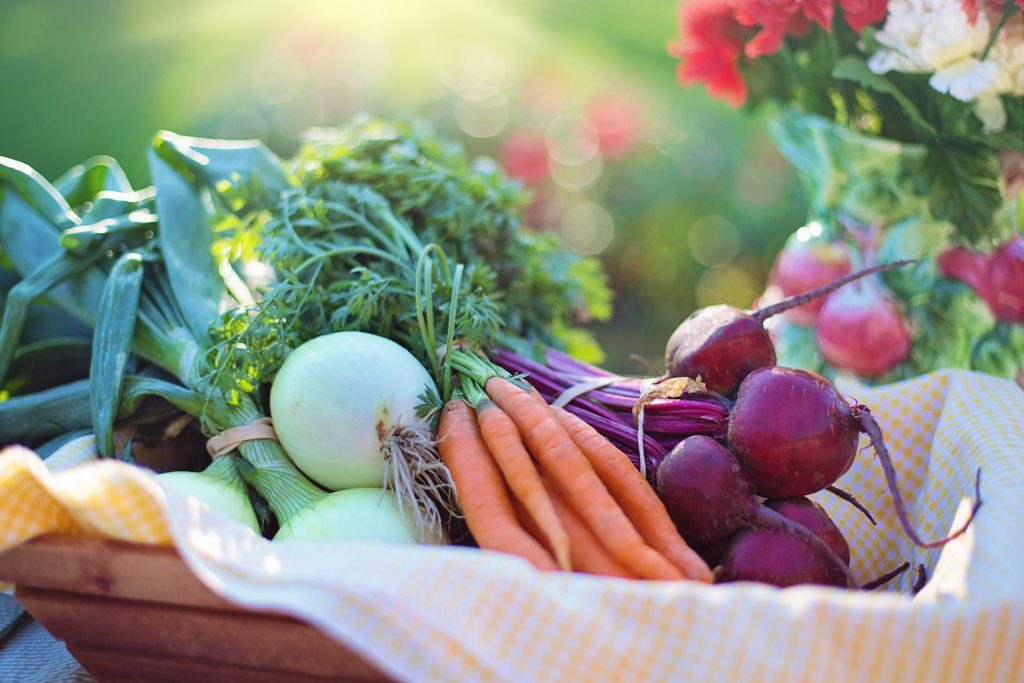 Local food is good for health and the environment. Buying local builds a strong local economy and a resilient food system, ensuring there is an adequate supply of fresh and healthy food in the community.
Local food is good for health and the environment. Buying local builds a strong local economy and a resilient food system, ensuring there is an adequate supply of fresh and healthy food in the community.
Consumers concerned with how their food is grown and raised enjoy greater transparency through interaction with local food producers.
The benefits of local food are undeniable, but the price of local products is often higher than conventional goods. Inconvenience accessing locally grown produce and meat also keeps consumers from spending more of their food budget on local fare.
Communicating the health, environmental and economic benefits of local food justifies the added cost and effort consumers must make to obtain it. Farmers can communicate the true value of local food through conversations, samples, in-store signage, newsletters, menus, blogs and vlogs, and agritourism.
Conversations
Direct sales are an opportunity for farmers to communicate the value of local food to customers. “Consumers‘ Preferences for Locally Produced Food: A Study in Southeast Missouri” found consumers’ want to know the farmer behind their food. ¹ Since traditional grocery stores and food distributors cannot share the story behind the food, farmers’ ability to engage consumers in conversations about local foods during direct sales is a competitive advantage.
In-store signage
When conversations with customers are not possible, in-store signage informs consumers of opportunities to buy local and support farmers in their community. On a recent trip to the supermarket I noticed signage featuring a rancher selfie with cattle. The sign invited shoppers to buy beef raised on local pastures to support area farmers.
Samples
Freshness, taste and quality are the top reasons consumers purchase local food over conventional goods. ¹ Offering samples invites consumers to see, smell and taste the local food difference.
Samples also inspire consumers to try local favorites in new ways. Local honey drizzled over Ohio cheese and apple dumplings made with fruit from a hometown orchard, demonstrate local products’ superior flavor and versatility.
Menus
Restaurant menus and advertisements that list sources of local ingredients show hometown pride. Diners are less sensitive to premium-priced meals when they know their choice supports agriculture in their community. Their purchase of local food from a local business reduces food miles, invests in area infrastructure, and create jobs in the community.
Newsletters
Newsletters communicate the value of local food in depth. Farmers can educate consumers about the health benefits of just-picked produce, sustainable production of pastured poultry or grass-fed beef.
Readers learn what’s in season now, and what fresh produce to look forward to in the future. Farmers can engage customers by asking them to submit their favorite seasonal recipes or share a testimonial about their love of local food. Newsletters share regional farm and garden events and tell customers where they can purchase farm products or how they can support local farms.
Print and digital newsletters make sense depending on delivery. Print newsletters work well in direct sales situations such as Community Supported Agriculture (CSA). Farmers who don’t have direct contact with consumers can create digital newsletters. Farmers can use free Microsoft Word templates to create newsletters and email to a list of subscribers. Alternatively, email marketing services such as Constant Contact and Mail Chimp are an easy way to create and manage newsletter subscriptions online.
Blogs and Vlogs
Blogs and vlogs are a window into farmers’ world. A blog is an online dairy of personal experiences and opinions. Vlogging (video blogging) is great for farmers who don’t enjoy writing or have limited time to create content. Both give consumers whom may never step foot on a farm an opportunity to experience agriculture and virtually participate in food production.
Agritourism
Inviting consumers to the farm is a powerful way to communicate the value of local food. Pasture walks, volunteer days, “How-to” and “DIY” clinics combine entertainment and education. Agritourism creates positive associations with farming and food production in the minds of consumers. It deepens their connection and commitment to local food.
Resources
- Brown, Cheryl., “Consumers‘ Preferences for Locally Produced Food: A Study in Southeast Missouri.” American Journal of Alternative Agriculture. Vol. 18, Iss. 4, December 1, 2003, pp. 213-224.
Article originally published in Farm & Dairy Newspaper, October 5, 2018.







